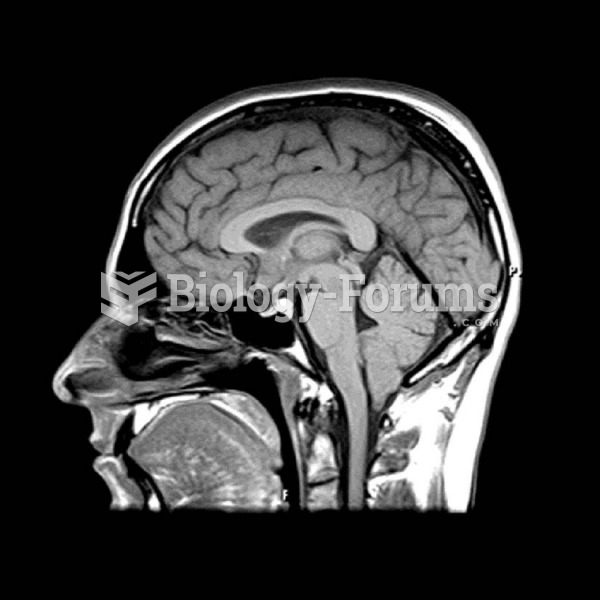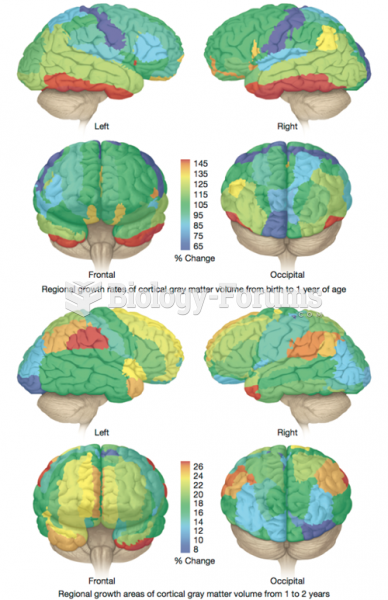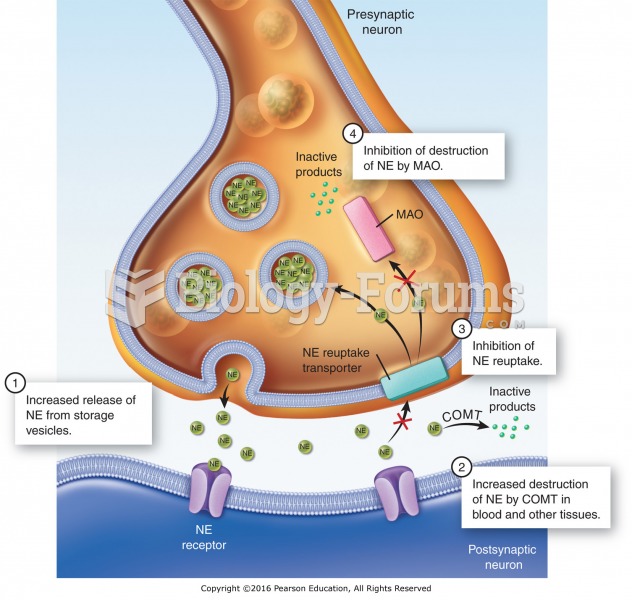|
|
|
This year, an estimated 1.4 million Americans will have a new or recurrent heart attack.
The calories found in one piece of cherry cheesecake could light a 60-watt light bulb for 1.5 hours.
Stevens-Johnson syndrome and Toxic Epidermal Necrolysis syndrome are life-threatening reactions that can result in death. Complications include permanent blindness, dry-eye syndrome, lung damage, photophobia, asthma, chronic obstructive pulmonary disease, permanent loss of nail beds, scarring of mucous membranes, arthritis, and chronic fatigue syndrome. Many patients' pores scar shut, causing them to retain heat.
Most childhood vaccines are 90–99% effective in preventing disease. Side effects are rarely serious.
Normal urine is sterile. It contains fluids, salts, and waste products. It is free of bacteria, viruses, and fungi.







